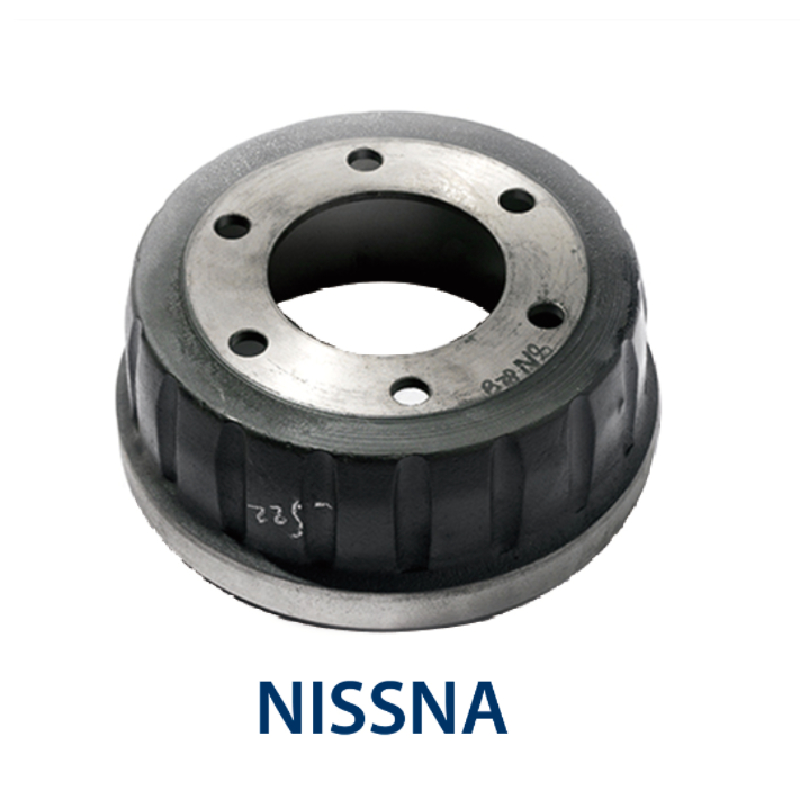Oct . 16, 2024 16:44 Back to list
Materials Used in Brake Drum Manufacturing and Their Impacts on Performance
The Material Composition of Brake Drums Understanding Its Importance
Brake drums are essential components of a vehicle’s braking system, playing a critical role in ensuring safety and efficiency during operation. The material composition of brake drums significantly influences their performance, durability, and effectiveness. Understanding the various materials used in the manufacturing of brake drums can provide valuable insights into their functionality and application across different vehicles.
Traditional Materials
Historically, brake drums were primarily made from cast iron, a material favored for its excellent strength and heat dissipation capabilities. Cast iron brake drums can withstand the intense heat generated during braking, maintaining their structural integrity under stress. Their resistance to warping and cracking adds to their longevity and reliability, making them ideal for a wide range of vehicles, from passenger cars to heavy trucks.
However, cast iron has its drawbacks. It tends to be heavy, which can influence a vehicle's overall weight and fuel efficiency. As automotive technology has evolved, manufacturers have sought lighter alternatives without compromising performance.
Modern Alternatives
In recent years, aluminum alloys have gained popularity for brake drum production. These materials offer a significant weight reduction compared to traditional cast iron. Aluminum brake drums provide improved acceleration and handling due to their lighter weight, which enhances fuel efficiency. Additionally, aluminum has good thermal conductivity, allowing for efficient heat dissipation, thereby reducing the chances of brake fade during prolonged use.
Some manufacturers use composite materials, which can incorporate a blend of aluminum, carbon fiber, and other compounds. These composites aim to combine the strength of metals with the lightweight properties of fiber materials, resulting in high-performance brake drums suitable for sports cars and other high-performance vehicles.
material of brake drum

Performance Considerations
The choice of material for brake drums impacts several performance factors, including thermal stability, resistance to wear, and overall braking efficiency. The thermal properties of a material are crucial, as excessive heat during braking can lead to brake fade, a phenomenon where the braking power diminishes. This is particularly dangerous during heavy braking scenarios, such as downhill driving or emergency stops.
Furthermore, the wear resistance of the brake drum material plays a vital role in maintenance and replacement intervals. Materials that exhibit high durability result in longer-lasting brake components, reducing the frequency of maintenance and associated costs. Brake drums must also provide a suitable friction surface that complements the brake shoes or pads, ensuring optimal braking performance.
Environmental and Economic Factors
The choice of material for brake drums is not solely driven by performance considerations. Environmental impact and economic factors also play significant roles. With increasing awareness of sustainability, manufacturers are exploring recycled materials and eco-friendly production practices. This shift not only helps reduce the carbon footprint associated with manufacturing but may also lead to cost savings in the long run.
Moreover, the market demand for high-quality, cost-effective brake drum solutions encourages manufacturers to innovate continually. The evolution towards advanced materials, such as lightweight composites, reflects the automotive industry's broader trends of enhancing performance while addressing environmental concerns.
Conclusion
The material composition of brake drums is a critical aspect that influences various performance metrics and safety factors in vehicles. While traditional materials like cast iron continue to hold their ground, the rise of aluminum and composite materials showcases the industry's commitment to innovation and sustainability. As technology continues to advance, the materials used in brake drum production are expected to evolve further, leading to improved safety, efficiency, and environmental stewardship in the automotive sector. Understanding these materials helps consumers make informed decisions regarding vehicle maintenance and upgrades, ultimately contributing to safer roadways.
-
Volvo Brake Drum: OEM Quality, Optimal Safety
NewsAug.27,2025
-
Durable Brake Drum MAZ for Heavy Duty Trucks | High Performance
NewsAug.26,2025
-
FUWA: Premium Quality, Reliable Performance & Innovative Solutions
NewsAug.25,2025
-
Liza Brake Drum: Superior Quality & Performance for Safe Driving
NewsAug.24,2025
-
Iveco Brake Drum | Premium OE Quality for Daily & Eurocargo
NewsAug.22,2025
-
Your Brake Drum Man: Quality & Performance Parts
NewsAug.21,2025
